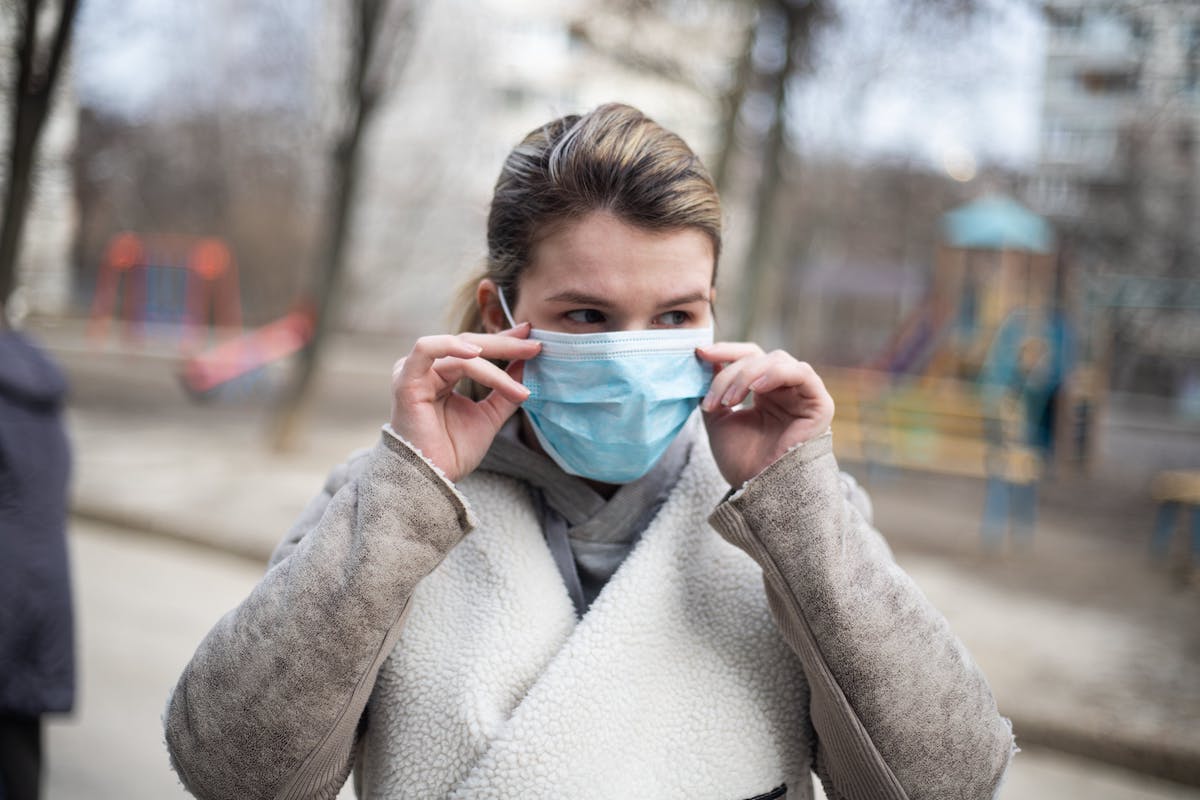The year is off to a rough start when it comes to respiratory illnesses. Though we may no longer be officially in the middle of a pandemic, COVID-19, which is still killing hundreds of people each day, and the usual suspects — flu, RSV and other respiratory pathogens — are sending thousands to the hospital. Here’s what to to know and cover in the midst of this respiratory disease surge.
COVID-19 surge underway
CDC wastewater data shows the current COVID-19 surge to be the largest increase since Omicron in December 2022, and wastewater detection of the virus continues to rise. As cardiologist and COVID commentator Eric Topol writes in the Los Angeles Times, an estimated 2 million infections a day are occurring in the U.S. The CDC’s COVID Data Tracker shows that COVID test positivity appears to be stabilizing, emergency room visits (up 12.8%), hospitalizations (up 20.4%) and deaths (up 12.5%) are continuing to rise.
Frustratingly, the CDC’s map of COVID test positivity, hospitalizations, deaths and hospital visits only provides data on geographic regions of the U.S. instead of individual states. But it’s clear that central Midwest states — Kansas, Nebraska, Iowa and Missouri — are faring the worst, followed by New England and Great Lakes states.
It’s not just the U.S. experiencing a surge. Italy’s hospitals are overwhelmed with cases of COVID-19, flu, and other respiratory illnesses, and the KFF Global COVID-19 Tracker and WHO COVID-19 dashboard show substantial increases in other parts of Europe and Asia. Topol’s Substack documents an unprecedented jump in wastewater levels of COVID-19 from the latest COVID variant JN.1, which accounts for approximately 62% of COVID cases in the U.S. as of Jan. 5.
RSV and flu rates high, too
As epidemiologist Caitlin Rivers wrote in a recent post for her Substack, Force of Infection, ”we’re in the thick of it now.” Doctor visits for influenza-like illnesses — the catch-all phrase for flu and otherwise unidentified respiratory illnesses — jumped more than a percentage point from the last week of 2023 to the first week of 2024. That means we’re nearly at last year’s peak of 7-8%. CDC’s FluView shows that influenza test positivity, now at 17.5%, is rising, as are flu hospitalizations and deaths. CDC national data for RSV similarly shows a sharp rise in cases nearing or exceeding last year’s peak, depending on the metric, though the South shows a decline and infections may be tapering in the Northeast.
‘White lung’ pneumonia is not a distinct, new illness
News stories began emerging in late November/early December about “white lung” syndrome or pneumonia, raising concerns about a new pathogen. But as I reported at Scientific American and as others reported elsewhere, “white lung” is not a real medical term. It’s simply a “scary lay description, not used by medical professionals, of what we see on a routine chest X-ray,” says William Schaffner, M.D., a Vanderbilt professor of infectious disease and medical director of the National Foundation for Infectious Diseases.
The miscommunication about “white lung” has been substantial enough that multiple hospitals have even published posts to dispel misinformation and anxiety about this term. (All these posts, like the stories linked above, contain excellent sources for respiratory disease articles.)
Still, I’ve heard from a few people that their providers have “warned” them about the condition even though it’s not something new and distinct from existing pneumonia. It’s therefore worth reminding people that “white lung” only refers to the “white” that appears in the lungs on an X-ray when someone has pneumonia, regardless of the underlying cause of the pneumonia.
Not too late for vaccines
Fall is traditionally when most journalism outlets post their seasonal flu vaccine stories, plus the addition of this year’s stories about the new COVID and RSV vaccines. But it’s worth continuing to report on vaccine availability into the new year. It’s not too late to get these vaccines, and January and February usually see the highest rates of respiratory illnesses.
Katelyn Jetelina of Your Local Epidemiologist has an excellent graphic of the 2023-2024 respiratory virus vaccines, including what they are, who is eligible for them, how effective they are and when people should get them. Recent research shows that the current COVID-19 vaccine reduces risk of hospitalization and emergency room visits while previous COVID-19 vaccines no longer do so. Further, a recent systematic review found that COVID-19 vaccination in general reduces risk of long COVID, an area of conflicting evidence for several years.
Masks mandates returning, along with mask research
The COVID-19 surge has also brought an upswing in mask requirements across the U.S. Reuters reports that California, Illinois, Massachusetts and New York have all instituted mask mandates at health care facilities. It’s worth paying attention to local hospitals in your area to see if they’re requiring masking independent of city, county or state mandates.
Despite the politicization of masks during the pandemic and the CDC’s repeated mask recommendation blunders, the data clearly show that masks reduce risk of COVID-19 and other respiratory infections, including for kids (see here, here, here, here and here for research on masking). Unfortunately, a misunderstanding about the limitations of randomized controlled trials and the underestimation of observational evidence has led to misinterpretations of studies and meta-analyses on masking effectiveness. But articles reminding audiences of the effectiveness of masks can help correct misinformation about their utility.











